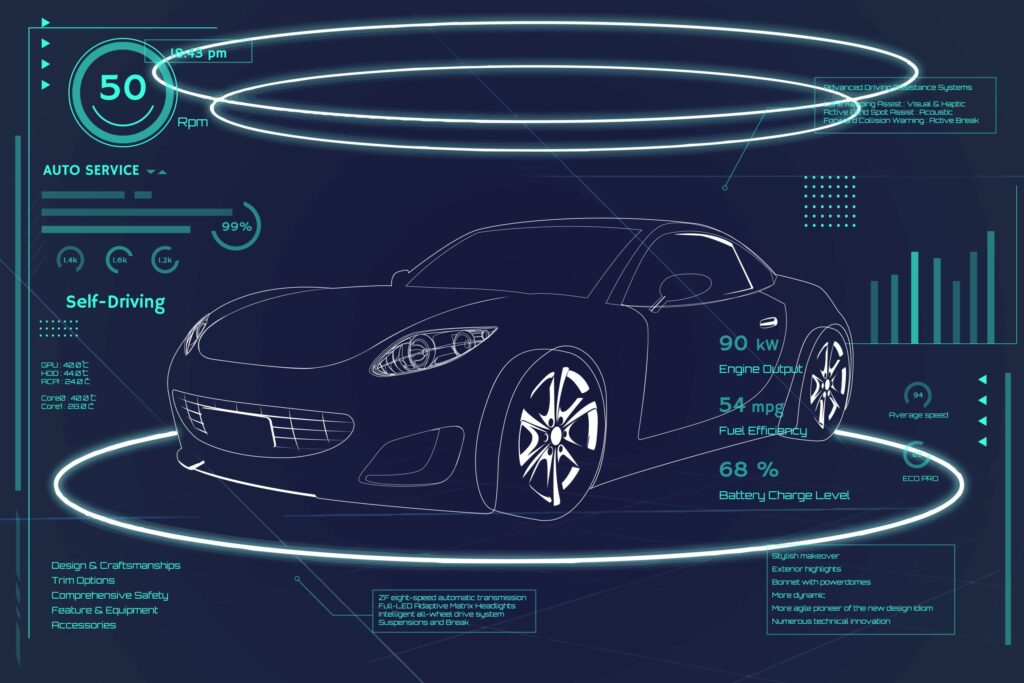With volumes rising and semiconductor innovation accelerating, Yole Group delivers a dual analysis on automotive radar technology, market dynamics, and chipset design.
Key Takeaways
- 166 million radar modules shipped globally in 2024; growth remains steady despite volume normalization.
- 4D radar now accounts for nearly 40% of shipments, becoming the new sensing standard.
- Ecosystem: China’s radar ecosystem is rapidly reshaping the Tier-1 and semiconductor landscapes: Sensor Tech (WHST), Cheng-Tech, HASCO, Huawei, WeiFu, HiRain. NXP, Infineon Technologies, and TI remain global leaders in the radar chipset race, with Calterah rising fast in China.
- Technology insights: differentiated semiconductor architectures are redefining automotive radar performance, cost, and scalability.
Yole Group announces the release of its Automotive Radar 2025 report alongside a new reverse engineering & costing report, Automotive Radar Chipset Comparison 2025. Together, these two reports from Yole Group provide a comprehensive view of the automotive radar industry, from system-level dynamics and market shifts to chip-level innovation and cost structures.
The Automotive Radar 2025 report delivers a comprehensive analysis of the radar ecosystem, from technologies and semiconductor platforms to market trends and regulatory drivers. It explores how evolving architectures, integration strategies, and regional dynamics are shaping next-generation ADAS and autonomous driving systems. The report also evaluates the competitive landscape, highlighting key players, innovation pathways, and future growth opportunities.

Without doubt, radar remains one of the fastest-growing sensing technologies in vehicles. In 2024, 166 million radar modules were shipped, up 8% year-on-year. Despite slower growth than earlier years, radar integration continues to deepen across ADAS and autonomous-driving platforms.
However, ASPs remain under pressure, constraining revenue expansion despite volume gains. The industry is now centered on the 77–81 GHz band, as older 24 GHz systems are phased out.
The radar market is shifting from a focus on sheer volume to value optimization. As radar becomes standard, differentiation increasingly depends on sensor architecture, integration level, and software-defined performance.
Hassan Saleh, PhD Senior Technology & Market Analyst, Radio Frequency
Technology convergence and market shifts
According to Yole Group, 4D radar, capable of elevation estimation/measurement, represented about 40% of shipments in 2024 and is rapidly becoming the baseline for all new designs. Regulatory initiatives, including Euro NCAP, EU, and NHTSA programs, are pushing OEMs toward broader radar coverage. By 2030, Yole Group’s analysts expect five radars per vehicle to become the global standard, driven by safety requirements and OEM differentiation strategies.
Meanwhile, in-cabin radar is emerging to detect the status of occupants and monitor vital signs, supported by 60 GHz and UWB technologies, though mass adoption awaits finalized safety standards.
China’s radar rise
China’s OEMs and suppliers are reshaping the global radar value chain. Local automakers such as BYD, Geely, and Chery are driving volume growth, while Chinese Tier-1s, including Sensor Tech (WHST), Cheng-Tech, HASCO, Huawei, and HiRain, are expanding rapidly.
“China is no longer just a customer base,” explains Hassan Saleh from Yole Group. ‘’It is becoming a radar innovation hub. From module design to semiconductor development, Chinese players are redefining competitiveness through vertical integration and localization.”

At the Tier-1 level, global leaders, Aumovio (Continental), Aptiv, Bosch, Forvia-Hella, Denso, and Magna still dominate. However, their market share at Chinese OEMs continues to erode. Global suppliers are adapting by localizing radar technology and supply chains for the Chinese market.
Semiconductor leadership and competition
The automotive radar device market was worth US$2.5 billion in 2024.
- NXP leads in RF-CMOS radar transceivers and is ramping up single-chip SoC platforms.
- Infineon Technologies maintains strength in MCUs but faces pressure in RFICs.
- Texas Instruments (TI) is gaining share with its CMOS radar SoCs, adopted globally and in China.
- Calterah is emerging as a key Chinese SoC supplier, while Bosch is preparing the ramp-up of its in-house SoC radar chipset
- Arbe and Mobileye are developing high-end imaging radar chipsets for L2+ to L4 autonomy.
Automotive Radar Chipset Comparison
In addition to its annual market analysis, the market research and strategy consulting company has releasing the Automotive Radar Chipset Comparison 2025, a reverse engineering and costing study of two advanced radar devices from leading semiconductor players: Texas Instruments’ AWR2544 and Infineon Technologies’ CTRX8191F.
This detailed comparison offers exclusive insight into the architecture, manufacturing cost, and design strategy of two distinct approaches to automotive radar integration:
- Texas Instruments AWR2544: A radar-on-chip (RoC) for automotive ADAS, integrating 76–81 GHz transceivers, analog baseband, a programmable Arm® MCU with a dedicated radar accelerator, and a Launch-On-Package (LOP) antenna interface for direct antenna connection. Optimized for moderate processing and compact code size, it enables cost-effective radar-on-chip applications.
- Infineon CTRX8191F: A high-performance 28 nm radar MMIC for next-generation imaging radar, integrating a 76–81 GHz transceiver with enhanced SNR, a digital PLL (< 1 µs flyback), and cascading support for multi-chip configurations. Designed for long-range detection up to ~380 m, it targets front-facing and L2+ to L4 autonomy systems.


Together, these devices illustrate how differentiated semiconductor architectures are shaping the next generation of automotive radar performance, cost, and scalability.
Radar is consolidating its role as a cornerstone of automotive sensing. While the market faces cost and margin pressures, innovation at both the system and semiconductor levels is driving a new era of performance and affordability.
Ihor Pershukov, PhD, Technology & Cost Analyst, Radio Frequency at Yole Group
Through Automotive Radar 2025 and Automotive Radar Chipset Comparison, Yole Group pursues its mission of delivering comprehensive insights into technology innovation, supply chain transformation, and market disruption shaping the future of mobility.
Stay tuned on www.yolegroup.com!
Automotive White Paper – Vol. 2
With this new Automotive White Paper, Yole Group takes a closer look at the fast-evolving automotive industry, where semiconductors are driving a new era of innovation. As vehicles become smarter, safer, and more autonomous, the demand for advanced chips is accelerating, reshaping the strategies of leading semiconductor players and challengers alike.
Access the Automotive White Paper, Vol. 2 and don’t miss out on Yole Group’s latest investigations!
Source: www.yolegroup.com


